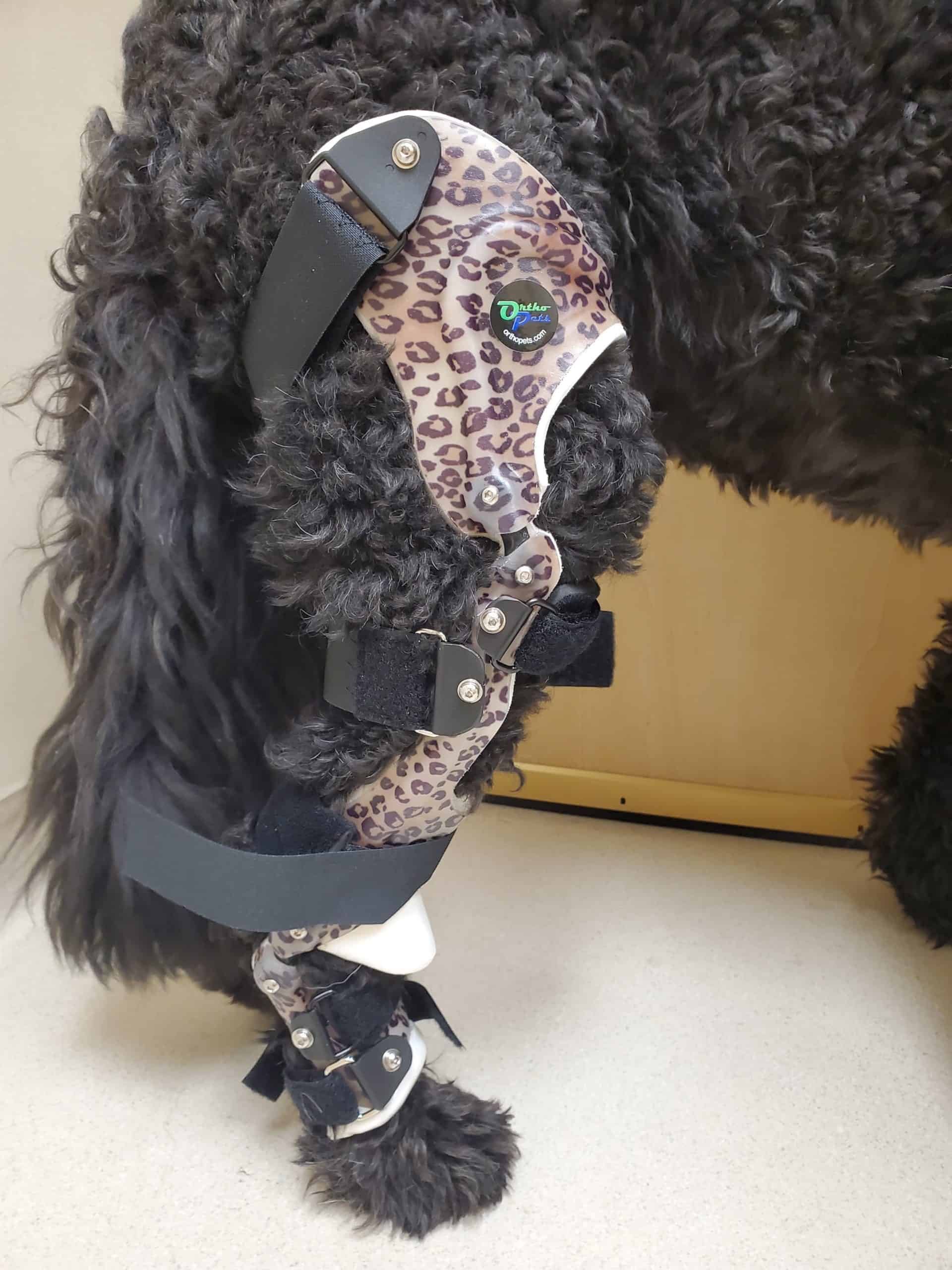Exploring Non-Surgical Solutions: How Stifle Orthotics Can Treat CCL Tears in Dogs
Introduction
A torn cranial cruciate ligament (CCL) in dogs can be a painful and debilitating condition, affecting their mobility and overall well-being. In recent years, there has been a growing interest in the use of custom stifle orthotics as an effective solution for managing CCL tears. In this article, we will explore how these specialized orthotics can play a crucial role in the treatment of CCL injuries in dogs.
Understanding CCL Tears
The CCL, equivalent to the anterior cruciate ligament (ACL) in humans, is responsible for stabilizing the knee joint. The CCL prevents the bottom bone (the tibia) from sliding forward in relation to the top bone (the femur). In this way it helps to stabilize the knee joint. When this ligament is torn, it can lead to pain, lameness, and reduced mobility in dogs. The image depicts what happens when the CCL is torn.
The unique anatomy of a dog's knee often results in degenerative CCL tears due to repeated stress rather than sudden injuries. These tears can be partial or complete, and there may be an incident when the ligament fully tears and the dog suddenly becomes lame. Unfortunately 50% of dogs who tear one CCL will tear the other side within a year.
Surgical Options and Risks
Conventionally, surgery stands as the primary treatment for CCL tears in dogs. Various surgical procedures, such as TPLO and extracapsular repair, aim to reduce knee joint instability, thereby mitigating inflammation and pain. These procedures can be very effective in conjunction with physical therapy for getting dogs back to their normal activities. However, these surgical procedures carry inherent risks, including infection, implant failure, and delayed bone healing. Additionally, there is emerging evidence of an increased risk of osteosarcoma in large breed dogs post-TPLO surgery compared to those without the procedure.
Custom Stifle Orthotics as an Alternative
While surgery is still the gold standard, we recognize that surgery is not the best option for many dogs. Some dogs may be compromised by multiple medical conditions, making surgery more risky. Advanced age or a less active lifestyle may make owners wary of putting their dog through a surgery and lengthy recovery process. Owners may also be concerned about their ability to effectively manage and restrict their dog’s activity post-surgery, which is incredibly important for the healing process. Additionally, there are instances where owners are simply unwilling to accept the inherent risks of surgery and seek other options.
For dogs and owners seeking non-surgical alternatives, custom stifle orthotics offer an effective solution. Collaborating with orthotic companies, we provide personalized knee braces designed to externally stabilize the knee joint. These braces strategically support key points of the knee joint, preventing the tibia from sliding forward against the femur. By eliminating this movement, inflammation and pain diminish, allowing dogs to use their leg more normally. Over time, the body may lay down enough scar tissue that the knee is stable and the brace can stop being used. It's essential to highlight that the movement we are preventing is incredible small, and given the variation in canine anatomy, only custom orthotics can effectively stabilize the knee.
Crafting a Tailored Solution
Crafting custom stifle orthotics involves a pain-free process for the dog. A cast mold of the dog's leg is taken, sent to the orthotic company for 3D modeling, and a customized device is created. The casting process takes about 30-45 minutes and is completely painless. The device is then fitted to the dog, with adjustments made for a perfect fit. Most devices need at least 1 to 2 adjustments to get the fit just right. Dogs gradually adapt to the brace through training on navigating stairs, sitting, and walking. Eventually dogs can go back to their normal activities wearing the brace including running, jumping, and playing. Dogs will typically wear their brace all day and have it off at night. After wearing the brace for at least six months, an exam is conducted to determine if sufficient scar tissue has formed to stabilize the knee joint. If so, we can begin doing some activities out of the brace. If not, then we continue to use the device. Some dogs will stay in their brace long term, especially older dogs or dogs with more severe injuries.
Inquire About Custom Stifle Orthotics Today
Custom stifle orthotics provide a valuable non-surgical option for managing CCL tears in dogs, offering a tailored approach to each canine patient. This alternative allows for effective stabilization of the knee joint, reducing pain and inflammation, and promoting a gradual return to normal activities. If you're seeking a compassionate and personalized solution for your pet's CCL tear, give us a call today! We can discuss your pets unique case and help determine if a stifle orthotic is right for them.


